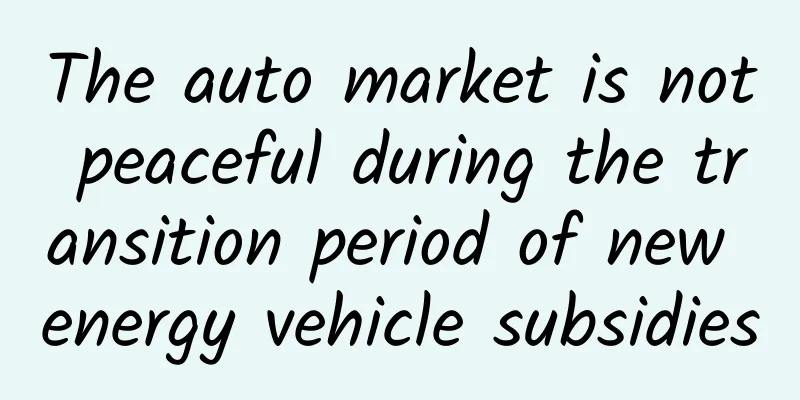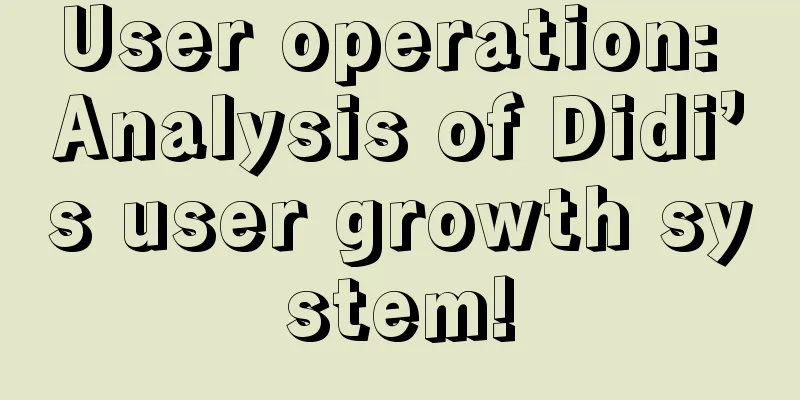Microalgae: Eats carbon dioxide and spits out bio-oil

|
Science and Technology Daily reporter Yong Li and intern Shan Qianlan Excessive carbon dioxide emissions are one of the main culprits of global warming. How can we reduce carbon dioxide? For example, can we "eat" it? It's no wonder that tiny microalgae have such a "good appetite", and they can not only "eat" carbon dioxide, but also turn "carbon" into "oil". Associate Professor Huang Yun from the Key Laboratory of Low-Grade Energy Utilization Technology and System of the Ministry of Education at the School of Energy and Power Engineering of Chongqing University pointed out that how to achieve effective utilization of carbon dioxide has become a key issue of concern to scientists from all over the world, and microalgae, a tiny ancient organism, has become a good helper for us to fix carbon and reduce emissions by virtue of its ability to convert "carbon" into "oil". Tiny microalgae can turn "carbon" into "oil" The tiny algae can turn "carbon" into "oil", which is related to the composition of the algae. "The esters and sugars rich in microalgae are good raw materials for preparing liquid fuels." Liao Qiang, dean of the School of Energy and Power Engineering of Chongqing University and director of the Key Laboratory of Low-grade Energy Utilization Technology and System of the Ministry of Education, introduced that driven by solar energy, microalgae can synthesize carbon dioxide into high-energy-density triglycerides, and these oil molecules can not only prepare biodiesel, but also are important raw materials for extracting highly nutritious unsaturated fatty acids such as EPA and DHA. "The photosynthetic efficiency of microalgae is the highest among all the organisms on Earth, 10 to 50 times that of terrestrial plants." Liao Qiang said that it is estimated that microalgae on Earth fix about 90 billion tons of carbon and 13.8 trillion kilojoules of energy through photosynthesis each year. The exploitable energy is equivalent to about 4-5 times the world's annual energy consumption, and the resource amount is huge. It is understood that my country emits about 11 billion tons of carbon dioxide each year, more than half of which is carbon dioxide from coal-fired flue gas. Using microalgae for photosynthetic carbon fixation in coal-fired industrial enterprises can greatly reduce carbon dioxide emissions. Compared with traditional coal-fired power plant flue gas reduction technology, microalgae carbon fixation and emission reduction technology has the advantages of simple process equipment, convenient operation and green environmental protection. In addition, microalgae also have the advantages of large populations, easy cultivation and can grow in oceans, lakes, saline-alkali lands, swamps and other places. Liao Qiang said that because microalgae have the ability to reduce carbon dioxide emissions and produce clean energy, it has received widespread attention both at home and abroad. However, it is not easy to make microalgae that grow freely in nature become "good employees" of carbon fixation in industrial production lines. How to cultivate algae artificially? Which microalgae has the better carbon fixation effect? How to improve the carbon fixation efficiency of microalgae? These are the problems that scientists need to solve. Make carbon sequestration no longer a "losing business" Last December, the first column-type microalgae photosynthetic reactor in China to reduce and transform carbon dioxide from flue gas of coal-fired power plants was completed at the China Resources Group Haifeng Power Plant in the Shenzhen-Shantou Special Cooperation Zone. The project has overcome the cutting-edge core technology of microalgae to reduce carbon dioxide from flue gas of coal-fired power plants, breaking through the technical bottlenecks of large footprint of traditional runway pools and low efficiency of carbon dioxide utilization, and realizing a large-scale, efficient and low-cost microalgae carbon fixation process route. It is estimated that compared with the traditional runway pool microalgae reactor, the column-type microalgae photosynthetic reactor has increased the microalgae yield and fixed carbon dioxide per mu by 5 times, and the column-type reactor has a compact structure and excellent lighting conditions, which greatly reduces the footprint of microalgae carbon fixation equipment. "This project provides an economically feasible technical route for the large-scale industrialization of flue gas carbon dioxide emission reduction in my country." As the person in charge of the "CO2 flue gas microalgae emission reduction technology" project of the National Key R&D Program "Clean and Efficient Utilization of Coal and New Energy-saving Technologies", Professor Cheng Jun of the School of Energy and Power Engineering of Chongqing University calculated that the cost of capturing and liquefying 99% concentration carbon dioxide from flue gas of coal chemical plants is less than 100 yuan/ton, and the cost of purifying, capturing and compressing 15% concentration carbon dioxide from flue gas of coal-fired power plants is about 250 yuan/ton. If it cannot be used, it will cost money to seal it. For enterprises, this is a money-losing "business", but carbon fixation through microalgae can achieve carbon utilization and create economic value. At present, 1 ton of food-grade algae powder can be sold for 40,000 yuan in the market, and the price of feed-grade algae powder is 10,000-20,000 yuan per ton. Through our technology, if a microalgae production and processing plant is built next to a coal chemical enterprise, the microalgae that are full of carbon dioxide will become valuable algae powder, which will become health products, cosmetics, and animal feed. In the Etuoke Banner Industrial Park in Ordos City, Inner Mongolia, the country's largest microalgae carbon dioxide fixation industry demonstration project has been built, which can fix 10,000 tons of flue gas purified food-grade carbon dioxide (referring to carbon dioxide products used in the food industry) each year, and the economic output value of carbon fixation microalgae reaches more than 200 million yuan each year. Etuoke Banner Spirulina has been applied for as a national geographical indication agricultural product, and the microalgae carbon fixation results have been industrialized and promoted in Shandong, Jiangsu, Guangxi, Hainan and other places. Microalgae oil production still needs to speed up technical research "Although microalgae carbon fixation has been industrialized, there is still a long way to go for microalgae to produce oil." Liao Qiang said that the main methods for using microalgae to produce biofuels include direct ester exchange, microbial fermentation, pyrolysis, gasification, hydrothermal liquefaction, etc. When using pyrolysis or gasification, it is necessary to fully dry it, which consumes a lot of energy; and the ester exchange method that directly uses wet algae as raw materials, due to the presence of a large amount of water, in order to extract oil, a large amount of methanol, ethanol and other organic solvents need to be added, which is easy to cause secondary pollution to the environment. At the same time, it also requires later separation and oil quality improvement. The technology and system are complex, the cost is high, the safety is poor, and it is difficult to industrialize. However, my country's research on microalgae biomass energy has never stopped. At present, my country has a strong research and development force in the basic research of microalgae biomass energy, and has done a lot of innovative research work from high-density cultivation of microalgae, dehydration and concentration to energy conversion technology. In the microalgae photosynthetic biocarbon fixation and multi-energy complementary biofuel production experimental platform built by the Ministry of Education Key Laboratory of Low-grade Energy Utilization Technology and System in the School of Energy and Power Engineering of Chongqing University, microalgae can convert carbon dioxide in waste gas and nitrogen and phosphorus in wastewater into biomass through photosynthesis. Researchers destroy microalgae cells and extract organic components such as oils and sugars in the cells, which can be further used to prepare clean fuels such as bio-oil and biogas. The microalgae industry has some unique advantages. Large algae must be grown in the sea, but microalgae can be grown anywhere. You only need to put seawater in a glass tank or reactor. As long as there is sunlight, carbon dioxide, nitrogen, phosphorus and potassium, it can continue to grow. After the mature microalgae are removed by centrifuge, the water can be recycled. The desert has plenty of sunlight, which is a very good condition. "If we can use 5% of my country's ocean area or all of my country's deserts, semi-deserts and saline-alkali land to cultivate microalgae, theoretically we can fix more than 7 billion tons of carbon dioxide emitted by coal burning in my country and produce 3.8 billion tons of biomass." Liao Qiang said that microalgae is a very promising bioenergy, but scale and cost are two major problems that restrict the industrialization of microalgae "oil". In order to make microalgae truly a bioenergy, on the one hand, it is necessary to increase investment in research and development to achieve breakthroughs in key technologies for biofuel production. On the other hand, we must regard the development of microalgae energy and its resource utilization technology as a long-term cause, attach great importance to cutting-edge basic research, and focus on breakthroughs in key technical bottlenecks. We must make full use of the high-value-added ingredients in microalgae, such as DHA, EPA and lutein, that is, first extract the high-value ingredients, use them in the production of health products, cosmetics, and feed, and then use them as energy to increase the value of the products. |
<<: Do particles have consciousness?
Recommend
How to move a sofa around a corridor? This is a problem that has puzzled mathematicians for more than 60 years.
It is probably too early to assert that the "...
What are the differences between rivers, lakes, ponds, abysses, and pools? Let's take a look at China's rivers and lakes!
Don't underestimate water. You should know th...
If you want to stand out in the competition in 2020, what should brand marketing do?
introduction In an era when traffic dividends are...
Where can you find new species? No-man’s land, no vegetable market!
Jin Xiaohua inspects Motuo County in Tibet. Zhu B...
What should I do if I receive a call and find out that I am a close contact? Practical tips →
"Infected Person 218" is popular! After...
How to plan fission activities? 4 key nodes!
The key to planning fission activities lies in th...
Tips for writing Douyin scripts
TikTok short video sales have become a new force ...
The new Liberty X will be released this year.
Jeep has always specialized in hard-core off-road...
What are the channels for promoting Tik Tok? Here are 5 tips for you!
How to promote Tik Tok ? What are the channels fo...
Can Microsoft Surface 3 compete with Apple iPad to the end?
The Surface series has been around for so long. I...
Talk about 5 distribution mechanisms of video content
What position does content distribution occupy in...
What to do if you have too much lucky money? Do you know how to withdraw money from WeChat without handling fee?
[[382126]] The long-awaited Spring Festival holid...
How to plan a lucky draw for the annual meeting? Share 1 set of theoretical formulas!
Attention, we are about to enter the "lotter...
Lanzhou Mini Program Mall promotion and traffic diversion, how to promote WeChat Mini Program Mall?
Recently, many customers have sent private messag...








![[Popular Science of Chinese Military Technology] How does VR technology assist military training? Will it become mainstream?](/upload/images/67f2252f31324.webp)
